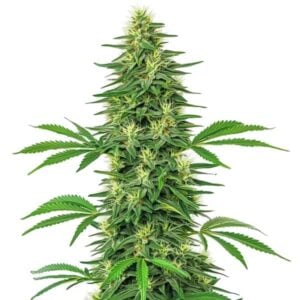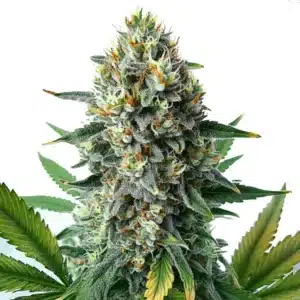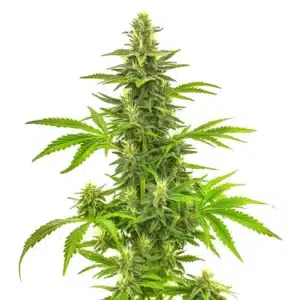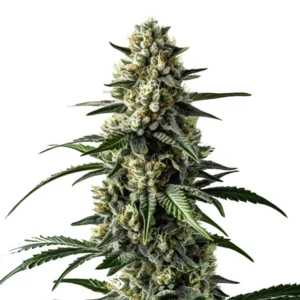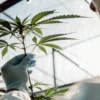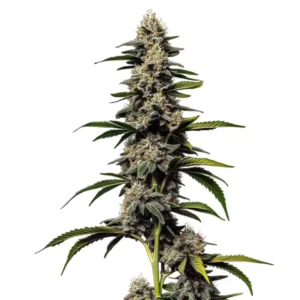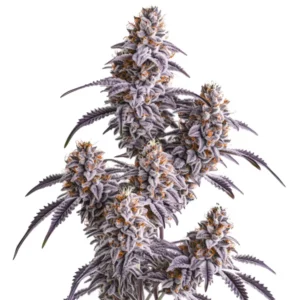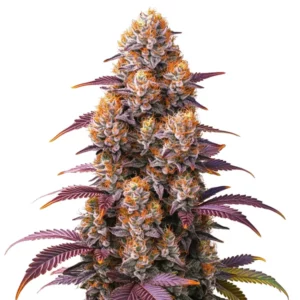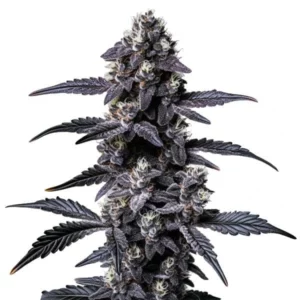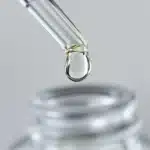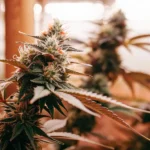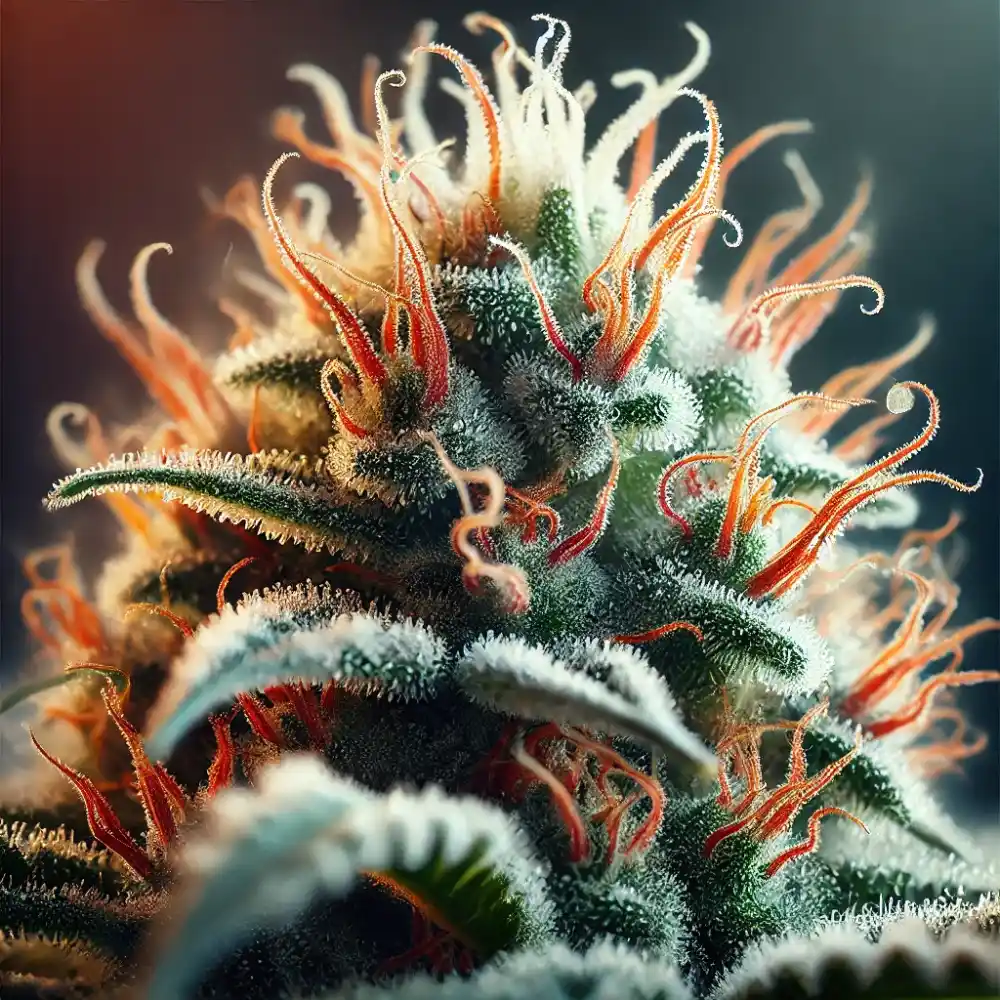
The Role of Pistils in Cannabis Growth
In the world of cannabis cultivation, understanding plant anatomy is crucial. One of the most important parts of the cannabis plant is the pistil.
But what exactly are pistils on weed? They are the female reproductive organs of the plant. They play a vital role in cannabis growth and reproduction.
Recommended Strains
Alien OG
|
|
THC | 22% - 28% (High) |
|
|
Type | Feminized |
|
|
Yield | Medium |
|
|
Phenotype | 50% Indica / 50% Sativa |
Alien OG Fast Version
|
|
THC | 14% - 16% (Medium) |
|
|
Type | Fast Flowering |
|
|
Yield | Medium |
|
|
Phenotype | 70% Indica / 30% Sativa |
Pistils on weed are not just biological structures. They are indicators of plant health, maturity, and even the plant’s sex. They can also influence the potency and flavor of the final product.
This guide will delve into the role of pistils in cannabis growth. It will provide a comprehensive understanding of their function, importance, and how they can be used as a tool in successful cannabis cultivation.
Whether you’re a seasoned cultivator, a botany enthusiast, or simply curious about the intricacies of cannabis growth, this guide will shed light on the fascinating world of cannabis pistils.
Cannabis Pistils
Cannabis pistils are crucial to the reproductive process. These structures are the female parts of the cannabis flower. The pistil comprises three main parts: the stigma, style, and ovary.
The stigma is the sticky tip of the pistil. Its primary role is to capture pollen. The style is a slender tube that connects the stigma to the ovary. Finally, the ovary houses the potential seeds, developing once pollination occurs.
Cannabis plants can be male, female, or hermaphroditic. Male plants produce pollen, while female plants carry pistils. Hermaphrodites have both reproductive organs.
Identifying plant sex early is essential in cultivation. Pistils are the distinguishing feature of female cannabis plants. Their presence indicates that the plant can potentially produce seeds.
Here’s a quick overview of cannabis plant sex characteristics:
- Male Plants: Produce pollen sacs.
- Female Plants: Have pistils for seed production.
- Hermaphroditic Plants: Contain both pistils and pollen sacs.
Recognizing pistils is not just about identifying plant sex. They can tell growers a lot about plant health and development. Healthy pistils are usually white or cream-colored in the early stages. They darken to orange, red, or brown as the plant matures.
Female plants are especially valuable in cultivation for their resin and cannabinoid-rich flowers. Their pistils play a significant role in this quality, making them vital for breeders and farmers aiming to create potent strains.
In essence, pistils are more than just reproductive organs. Their appearance provides insights into the plant’s lifecycle and overall vigor. Understanding pistils can significantly enhance a cultivator’s ability to manage and optimize cannabis growth.
Promos & Deals
The Biological Function of Pistils in Cannabis Reproduction
Pistils play an integral role in cannabis reproduction. They are essential in the processes of pollination and fertilization. When a pollen grain lands on the pistil’s stigma, it initiates pollination.
The stigma’s sticky surface is tailored to catch pollen. Once secured, the pollen travels down the style, reaching the ovary. This journey is crucial for fertilizing the ovules within the ovary.
Fertilization leads to seed development. After successful pollination, seeds start forming within the ovary. This is a vital stage for sustaining the cannabis species and ensuring genetic diversity.
Pistils also influence cannabis genetics. During reproduction, genetic material combines from both parent plants. This process allows breeders to develop new strains with unique traits.
In breeding, pistils are central to selecting and refining desirable genetics. Growers monitor pistil traits to ensure optimal plant characteristics. These might include cannabinoid content, resilience, or flavor profiles.
Cannabis breeding heavily relies on pistils. By analyzing pistil health and functionality, breeders can achieve specific goals. These goals often include increased potency or disease resistance.
To sum up, pistils are more than mere reproductive structures. Their biological functions are foundational to cannabis genetics, breeding, and species preservation. Cultivators and breeders must understand pistil roles to maximize plant potential and drive innovation in cannabis cultivation.
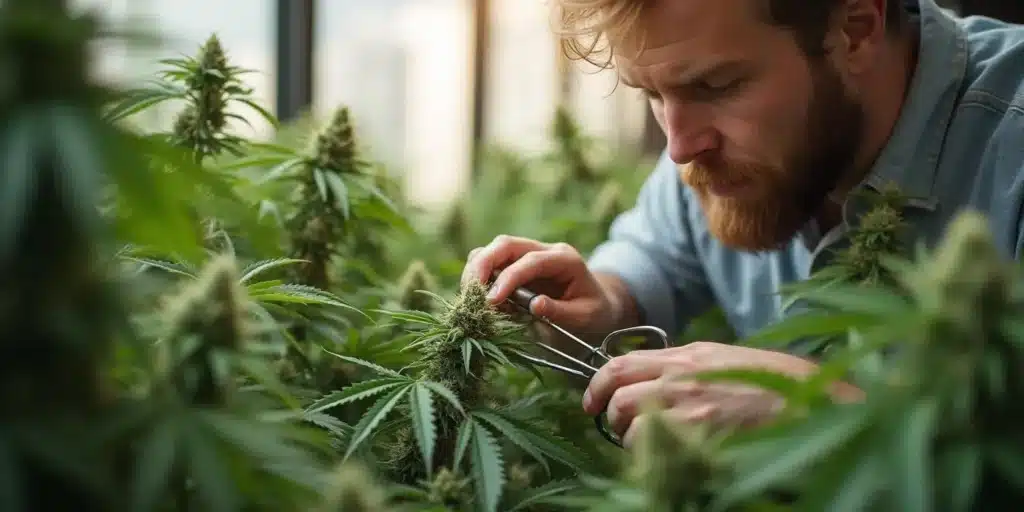
Pistil Health and Plant Maturity
Pistil color is an important indicator of plant maturity. During their lifecycle, pistils transition through various color stages. Initially white and vibrant, pistils eventually change to dark hues, often orange or browThese color shifts help growers time the harvest. When most pistils have darkened, it typically signifies plant maturity. This period is crucial for achieving maximum potency and yield.
Recognizing healthy pistils is crucial for plant growth. Healthy pistils appear moist, plump, and vibrant in color. They respond well to environmental conditions and reflect good plant health.
Unhealthy pistils, however, can signal issues. Discoloration, brittleness, or premature darkening might indicate stress or diseases. Observing these signs can guide growers in adjusting care strategies.
Several environmental factors influence pistil development. Light cycles, temperature, and humidity levels all play roles. Proper environmental control can promote healthy pistil growth and ensure robust development.
Some key factors to consider include:
- Consistent light cycles for proper flowering
- Optimal temperatures to prevent stress
- Adequate humidity levels to maintain pistil hydration
Managing these factors helps avoid issues like slow development or decreased potency. Understanding the environmental impact on pistils provides critical insights into plant health.
Addressing pistil health is vital for quality cultivation. Healthy pistils contribute to productive cannabis plants with superior yields. By monitoring pistil condition, growers can better understand plant needs and optimize cultivation practices for success. Maintaining ideal conditions throughout the growth stages ensures pistils develop to their full potential, directly impacting the quality and quantity of the harvest.
Pistils as Harvest Indicators
Pistil color serves as a crucial guide for determining harvest time. As the cannabis plant matures, most pistils turn from white to darker shades. When over 70% of pistils have darkened, it generally signifies optimal harvest timing.
This change in color affects not only the appearance but also the potency. Darkened pistils are often associated with peak cannabinoid production, which is essential for achieving the desired effects and flavors.
The morphology of pistils can reveal insights into cannabinoid content. Healthy, robust pistils may suggest a plant rich in THC or CBD. Such physical attributes can help growers anticipate the chemical profile of the final product.
However, there are common misconceptions about pistils and harvesting. Many believe that pistil color alone is enough to determine readiness. In reality, other factors like trichome development should also be considered for a precise harvest time.
Relying solely on pistil color can lead to misjudgments. Trichomes, with their resinous appearance, complement pistil examination by providing additional cues regarding plant maturity. Understanding the interplay between pistils and trichomes ensures a better assessment of when to harvest.
Harvesting decisions based on comprehensive observations lead to higher quality yields. By combining pistil color with other plant characteristics, growers ensure they maximize cannabinoid potency and the overall quality of their cannabis crop. This holistic approach promotes a successful and rewarding cultivation experience, yielding cannabis that meets high standards and expectations.
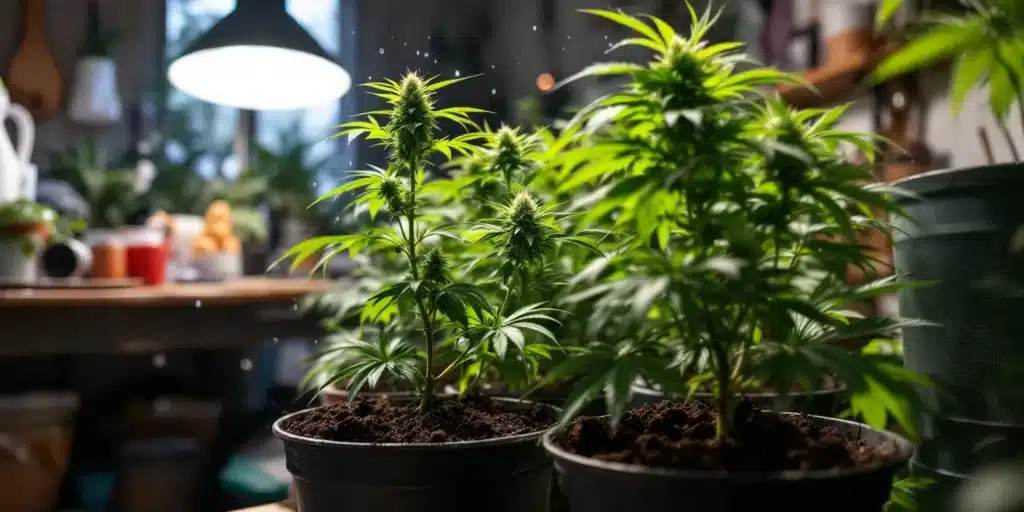
Pistils and Cannabis Cultivation Techniques
Achieving optimal pistil health is key for successful cannabis cultivation. Healthy pistils support robust plant growth and high-quality yield. They respond well to effective cultivation techniques, maximizing the plant’s potential.
An optimal pistil health starts with precise environmental control. Light cycles play a pivotal role in pistil development. The transition from vegetative to flowering stages requires specific light patterns. A 12-hour light and 12-hour dark cycle usually encourage flowering, enhancing pistil growth.
Environmental factors, such as temperature and humidity, also impact pistils. Maintaining ideal conditions ensures pistils remain vibrant and resilient. High humidity can cause mold, affecting pistil health, so optimal ventilation is vital.
Hand-pollination is a technique used to control genetic outcomes. It involves manually transferring pollen to pistils, allowing for specific trait selection. This method is useful for breeding customized strains with unique characteristics.
Using hand-pollination, cultivators can better manage genetic diversity. It allows for refined selections of aroma, flavor, and cannabinoid levels. Controlled breeding through pistils offers opportunities for innovation in cannabis cultivation.
Some effective techniques for hand-pollination include:
- Identifying suitable female plants based on pistil health.
- Collecting pollen from targeted male plants.
- Gently applying pollen to the chosen pistils using a brush.
Understanding the role of pistils in hand-pollination helps in achieving precise breeding goals. These methods are essential for advancing cannabis cultivation practices.
By focusing on pistil health and experimenting with hand-pollination, growers enhance plant qualities. This leads to superior cannabis with desired traits, benefiting both cultivators and consumers. Integrating these techniques into cultivation practices fosters a thriving cannabis industry marked by quality and innovation.
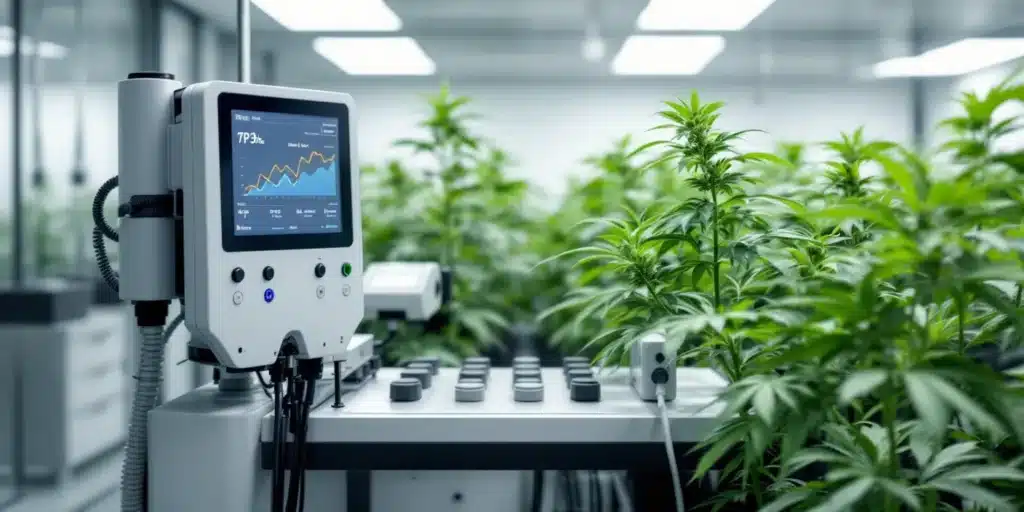
Pistils in the Context of Cannabis Science and Industry
The evolutionary significance of pistils can provide key insights into cannabis plant development. These structures play a major role in the plant’s reproductive strategy. Their adaptation helps ensure successful pollination and seed generation in various environments.
Pistil development supports the survival and propagation of cannabis. They serve as a target for pollen, facilitating genetic exchange and diversity. This evolutionary advantage enhances the plant’s resilience across different climates and conditions.
In the context of modern cannabis breeding, pistils are crucial. Breeders use pistil characteristics to develop new, desirable strains. By analyzing pistil morphology, they can select plants that express unique or potent genetic traits.
The future of cannabis breeding hinges on understanding pistil traits. Advanced breeding techniques aim to enhance attributes like flavor, potency, and yield. Pistils are at the heart of these innovations, offering pathways to customize cannabis more effectively.
A list of how pistils influence cannabis breeding includes:
- Selecting plants based on pistil color and formation
- Designing strains for specific environmental adaptations
- Targeting pistil-related traits for enhanced cannabinoid production
Pistils also significantly impact cannabis quality and market value. The presence and condition of pistils can indicate plant health and readiness for harvest. Vibrant, well-developed pistils often signal a high-quality product.
In the market, pistil characteristics can influence consumer preference. Connoisseurs may look at pistils to gauge freshness and potential effects. Cannabis with distinct, well-formed pistils can command higher prices.
Thus, pistils hold a valuable position in the cannabis industry. They are integral to scientific research, breeding strategies, and market dynamics. As understanding of pistils grows, the potential for innovation in cannabis cultivation expands, offering promising directions for the industry’s future.
Common Questions and Myths About Cannabis Pistils
Many misconceptions exist about cannabis pistils. One common myth is that pistils directly influence potency. In fact, they play a more indirect role. Their main function is reproductive, not determining potency levels.
Some growers mistakenly believe all pistils must turn amber before harvest. While pistil color is a helpful indicator, other factors should be considered for optimal harvest timing. Trichomes, cannabinoid levels, and overall plant health are more reliable indicators.
A widespread myth is that pistils contribute directly to cannabis flavor. In reality, they influence flavor indirectly through their role in reproduction. It’s the combination of terpenes and other compounds that determine flavor profiles.
The role of pistils in cannabis potency and flavor includes:
- Providing a site for pollination, indirectly affecting seed production
- Signaling plant maturity, which can impact cannabinoid concentration
- Supporting trichome development, essential for flavor and aroma
Cannabis pistils are vital in education and cultural understanding. Teaching about pistils helps demystify cannabis growth for cultivators and enthusiasts. By understanding pistil biology, students can appreciate the complexity of plant reproduction and its implications.
Culturally, pistils have been misunderstood and underappreciated. Traditionally, focus is on leaves and buds, neglecting pistils’ critical role. Recognizing their importance promotes a deeper appreciation of the plant’s lifecycle and utility.
For educators, pistils serve as a gateway into broader botany topics. They offer a tangible example of plant reproduction, genetic diversity, and environmental adaptation. Educating others about pistils fosters curiosity and respect for plant science.
Understanding and dispelling myths about pistils enhances cultivation practices. It aids in making informed decisions that lead to successful crop yields. With accurate knowledge, growers can optimize their practices, supporting both the art and science of cannabis cultivation.
Pistils play a crucial role in the growth and reproduction of cannabis plants. They serve as indicators of plant maturity and health. Understanding pistils helps cultivators optimize harvest timing and improve plant yield. By observing pistil development, one can gauge environmental conditions and potential stressors.
Continued research on pistils is key to advancing cannabis cultivation and breeding techniques. As the industry evolves, deeper insight into pistil functionality could lead to novel strains and enhanced plant properties. Emphasizing pistil study will contribute to sustainable and effective cannabis growth practices. The future of cannabis science rests on these tiny, yet powerful, plant components.


